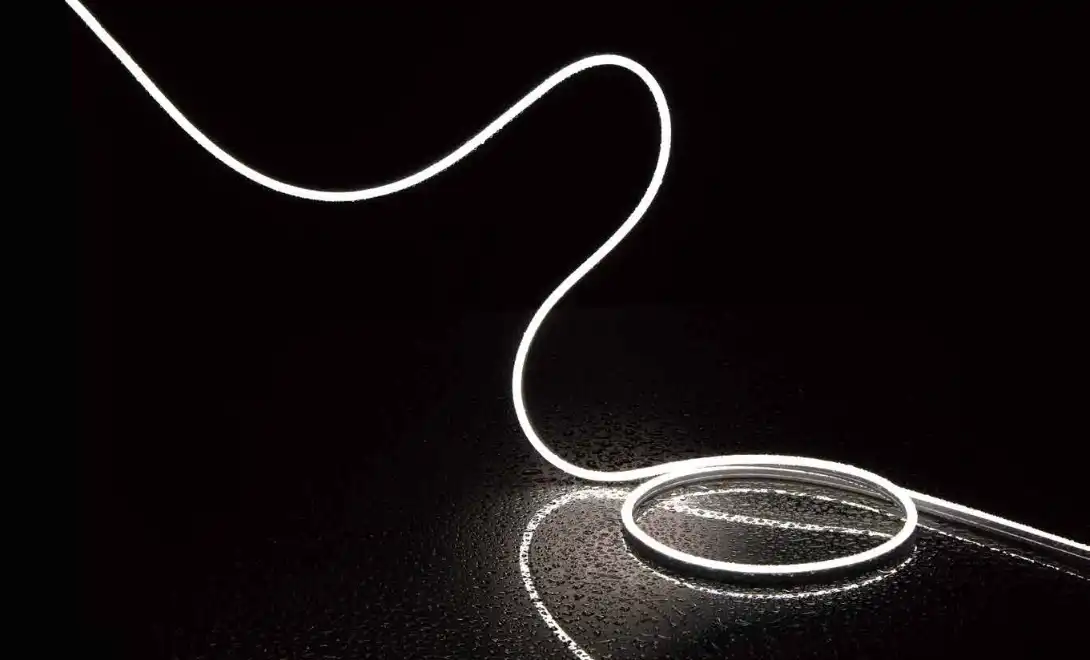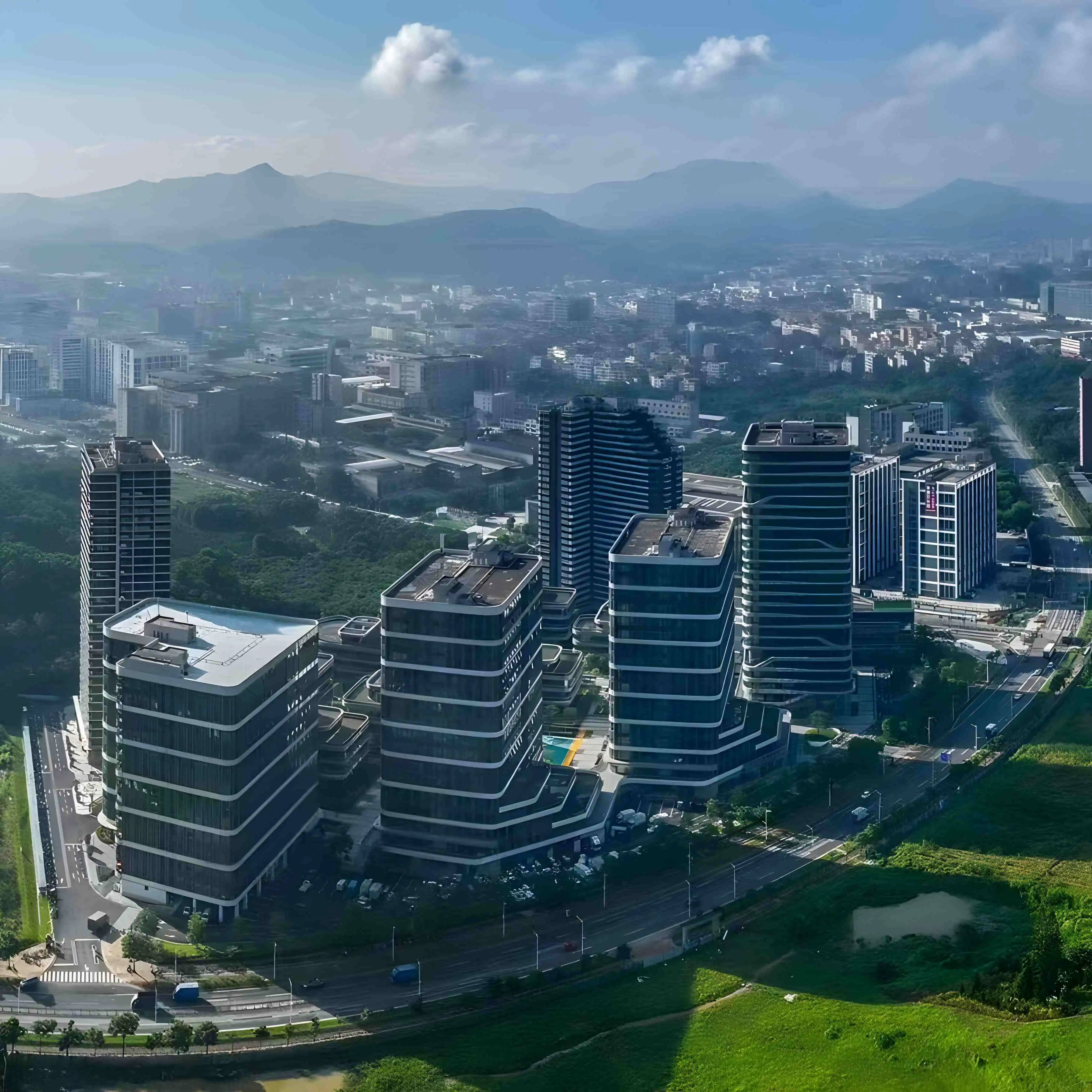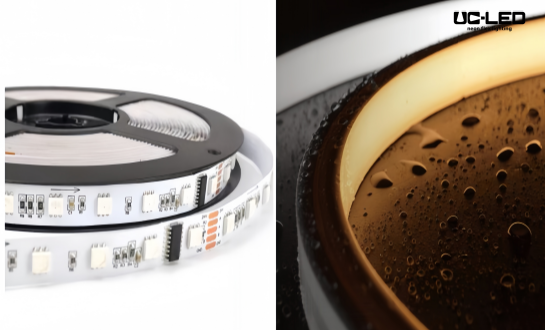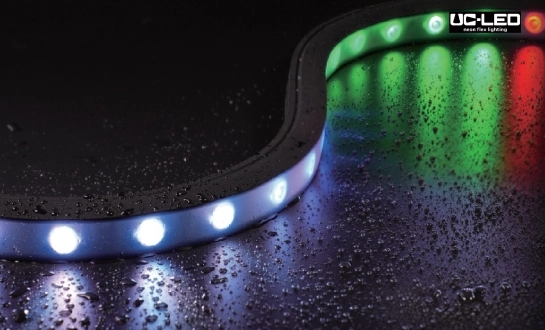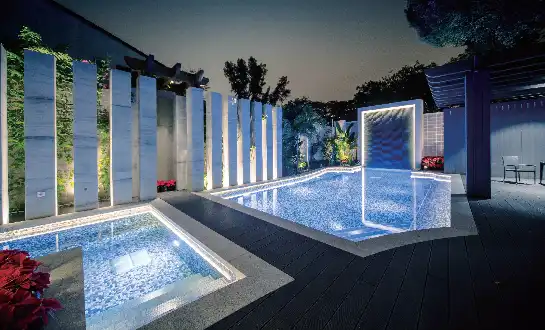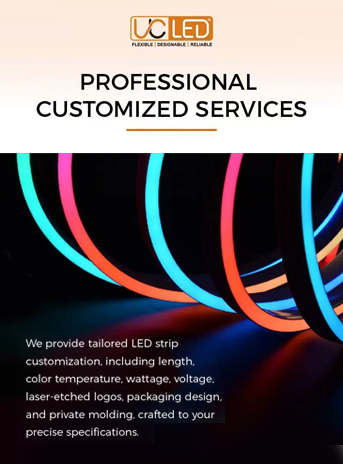Understanding the Basics: LED Neon Flex and LED Strip Lights
What is LED Neon Flex?
LED neon flex is a modern lighting solution that emulates the look of traditional neon lighting while offering significant advantages in terms of energy efficiency, durability, and versatility. This innovative product consists of a series of LEDs encased in a flexible PVC or silicone tube, creating a continuous, seamless light source that can be bent and shaped to form various designs.
The construction of LED neon flex allows for a more even distribution of light, resulting in a smooth, uninterrupted glow that closely resembles classic neon signs. This uniformity is achieved through the use of a diffuser material within the casing, which helps to blend the individual LED light points into a cohesive beam.
One of the key attributes of LED neon flex is its flexibility. It can be easily manipulated to create curves, bends, and even intricate shapes, making it an ideal choice for custom signage, architectural lighting, and artistic installations. This malleability, combined with its durability and weather resistance, allows for both indoor and outdoor applications.
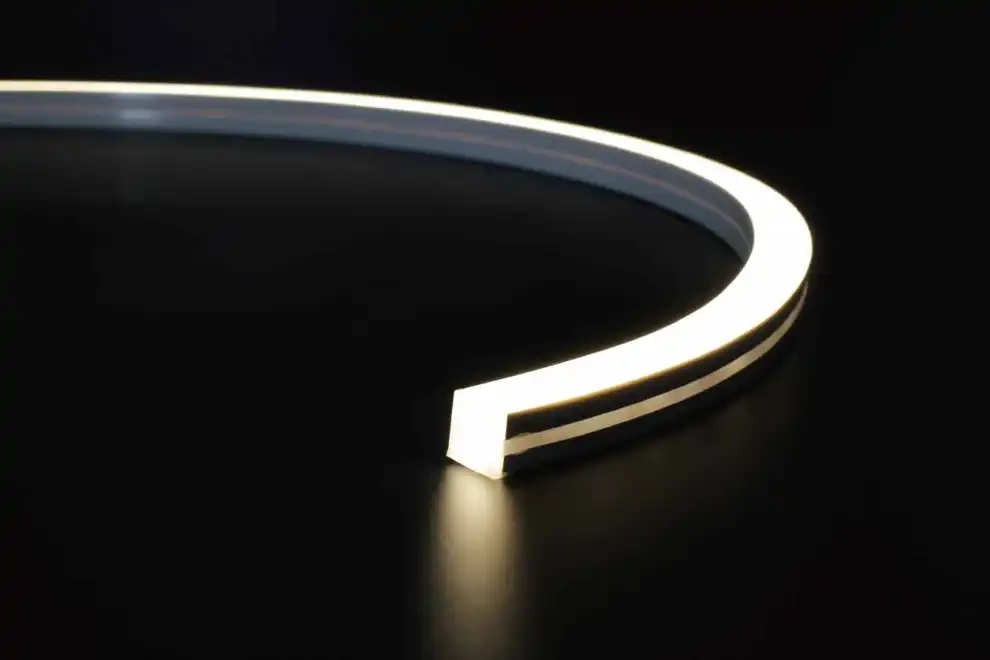
What are LED Strip Lights?
LED strip lights, also known as LED tape or ribbon lights, are flexible circuits boards populated with surface-mounted LEDs. These strips are typically long, narrow, and adhesive-backed, allowing for easy installation on various surfaces. LED strip lights, often compared in discussions like LED neon flex vs strip, are renowned for their versatility and can be cut to specific lengths, making them highly customizable for a wide range of lighting projects.
The design of LED strip lights features individual LEDs placed at regular intervals along the strip. This configuration allows for precise control over lighting intensity and color, especially in RGB or RGBW variants that offer millions of color options. The flexibility of these strips enables them to conform to corners and contours, making them suitable for under-cabinet lighting, accent lighting, and backlighting applications.
LED strip lights are available in various densities, measured by the number of LEDs per meter. Higher density strips provide brighter, more uniform lighting, while lower density options are more economical and suitable for ambient lighting scenarios. The adaptability of LED strips extends to their power requirements, with options ranging from low-voltage 12V or 24V systems to mains-powered versions for larger installations.
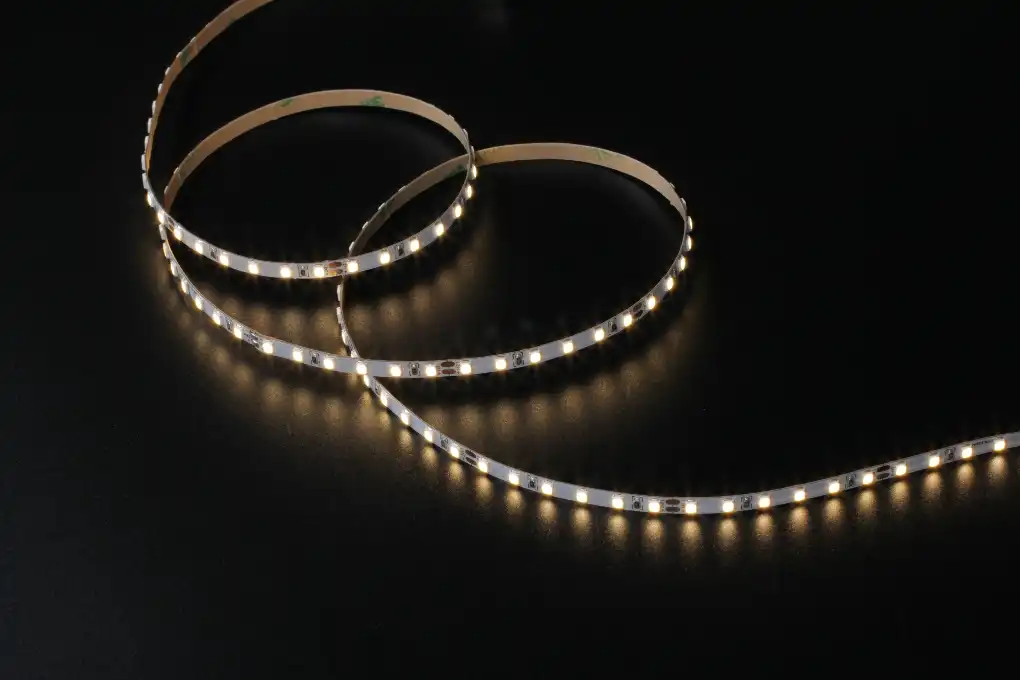
Comparing Features: LED Neon Flex vs. LED Strip Lights
Illumination Quality and Aesthetics
When it comes to illumination quality, LED neon flex and LED strip lights offer distinct characteristics that cater to different aesthetic preferences and functional requirements. LED neon flex is renowned for its ability to produce a soft, diffused glow that closely mimics the warm, inviting ambiance of traditional neon lighting. This uniform illumination is achieved through the unique construction of LED neon flex, where LEDs are encased in a semi-opaque, flexible tube that acts as a natural diffuser.
The result is a seamless line of light without visible hotspots, making LED neon flex particularly appealing for creating eye-catching signage, architectural accents, and decorative lighting installations. The smooth, continuous glow of LED neon flex lends itself well to applications where a vintage or retro aesthetic is desired, while still offering the benefits of modern LED technology.
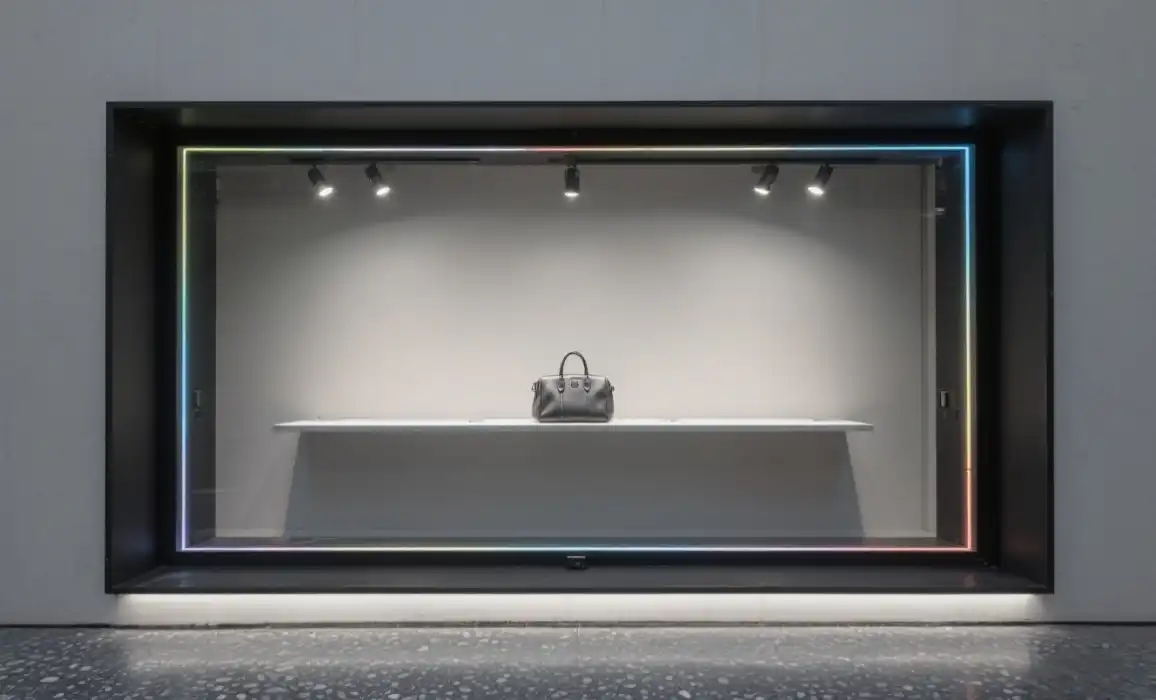
In contrast, LED strip lights typically provide a more directional and focused light output. The individual LEDs on a strip are often visible as distinct points of light, which can be an advantage in certain applications where a more modern, tech-inspired look is preferred. However, this characteristic can also be mitigated through the use of diffuser covers or channels, which help to blend the light and create a more uniform appearance.
Flexibility and Installation
Both LED neon flex and LED strip lights offer significant flexibility in terms of installation and application, but they differ in their specific strengths. LED neon flex is designed to be bent and shaped into various configurations, making it ideal for creating custom shapes and designs. This flexibility allows for the creation of intricate logos, letters, and artistic installations that can be mounted on walls, ceilings, or freestanding structures.
The installation process for LED neon flex typically involves using mounting clips or channels to secure the light in place. While it can be cut to size, this usually needs to be done at specific intervals and may require professional assistance to ensure proper sealing and electrical connections. Despite these considerations, LED neon flex remains a popular choice for projects that require a continuous, unbroken line of light that can follow complex curves and contours.
LED strip lights, on the other hand, offer unparalleled ease of installation and customization. Most LED strips come with an adhesive backing, allowing for simple peel-and-stick application to a wide variety of surfaces. They can be easily cut to precise lengths at marked intervals, typically every few centimeters, without the need for special tools or expertise. This feature makes LED strips extremely versatile for DIY projects and applications where lighting needs to fit into tight or irregularly shaped spaces.
Energy Efficiency and Lifespan
Both LED neon flex and LED strip lights are renowned for their energy efficiency, significantly outperforming traditional lighting options like incandescent or fluorescent bulbs. However, there are some nuances in their energy consumption and longevity that are worth considering.
LED neon flex typically consumes slightly more power than LED strip lights due to its construction. The additional materials used to create the neon-like effect, such as the diffuser tube and any color-changing components, can increase energy requirements. However, this difference is often negligible in the context of overall energy savings compared to traditional neon lighting. LED neon flex still offers substantial energy efficiency, with power consumption usually ranging from 2.5 to 5 watts per foot, depending on the specific product and color output.
The lifespan of LED neon flex is generally excellent, with many manufacturers claiming operational lives of 50,000 hours or more. This longevity is partly due to the protective casing that shields the LEDs from environmental factors, potentially extending their usable life in outdoor applications.
LED strip lights, being more minimalist in design, often have a slight edge in energy efficiency. High-quality LED strips can operate at as little as 1.5 to 3 watts per foot, making them an extremely eco-friendly lighting option. This efficiency makes LED strips particularly suitable for large-scale installations or situations where lights may need to be left on for extended periods.
In terms of lifespan, LED strip lights can also boast impressive longevity, with many rated for 30,000 to 50,000 hours of operation. However, their more exposed nature compared to LED neon flex means they may be more susceptible to damage or degradation in harsh environments unless properly protected.
Applications and Use Cases
Ideal Scenarios for LED Neon Flex
LED neon flex shines in applications where a bold, continuous line of light is desired, particularly in scenarios that aim to replicate or modernize the classic neon aesthetic. Its unique properties make it exceptionally well-suited for several specific use cases:
- Signage and Branding: The seamless, bright glow of LED neon flex makes it perfect for creating eye-catching signs for businesses, events, or personal spaces. It can be shaped into letters, logos, or intricate designs, offering a modern take on traditional neon signage without the fragility or high power consumption.
- Architectural Accent Lighting: LED neon flex can be used to highlight architectural features of buildings, both interior and exterior. It's particularly effective for outlining roof lines, windows, or creating dramatic facade lighting that enhances the structure's appearance at night.
- Art Installations: Artists and designers often choose LED neon flex for creating luminous sculptures or interactive light installations. Its flexibility and uniform glow allow for the realization of complex, three-dimensional light designs.
- Themed Environments: In settings like bars, clubs, or themed restaurants, LED neon flex can create immersive atmospheres. It's particularly popular in retro or futuristic-themed spaces, where it can evoke nostalgia or a sense of cutting-edge design.
- Outdoor Lighting Features: The weather-resistant properties of many LED neon flex products make them suitable for outdoor use. They can be used to create striking landscape lighting features, illuminate pathways, or add a festive touch to outdoor events.
Best Applications for LED Strip Lights
LED strip lights excel in versatility and are ideal for applications that require precise control over lighting placement and intensity. Their adaptability, often highlighted in comparisons such as LED neon flex vs strip, makes them suitable for a wide range of uses:
- Task Lighting: In kitchens, workshops, or offices, LED strips provide excellent under-cabinet or workbench lighting. Their low profile and ability to be easily concealed make them perfect for illuminating specific work areas without visual clutter.
- Accent Lighting: LED strips are frequently used to create subtle ambient lighting in homes and commercial spaces. They can be installed along baseboards, under furniture, or behind TVs to create a soft, atmospheric glow.
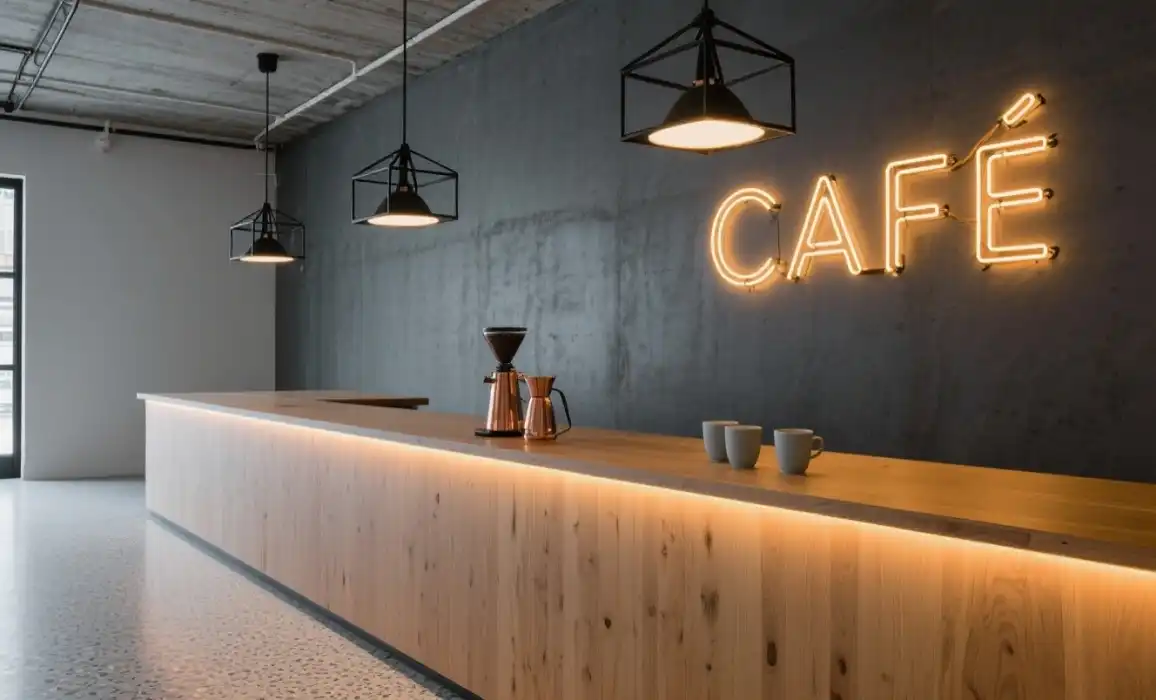
- Display and Retail Lighting: In retail environments, LED strips are often used to highlight products on shelves or in display cases. Their ability to render colors accurately (with high CRI options) makes them ideal for showcasing merchandise.
- Automotive and Transportation: LED strips find applications in vehicle interior lighting, providing ambient lighting in cars, boats, and even aircraft cabins. Their low power consumption and durability make them well-suited for these mobile environments.
- Smart Home Integration: Many LED strip lights can be integrated with smart home systems, allowing for remote control, color changing, and automation. This makes them popular for creating dynamic lighting scenes in living spaces.
- Stage and Event Lighting: The flexibility and color-changing capabilities of LED strips make them valuable tools in stage design and event production. They can be used to create dynamic backdrops, outline set pieces, or provide subtle ambient lighting effects.
- Safety and Wayfinding: In commercial and public spaces, LED strips can be used for safety lighting along staircases, in corridors, or to mark emergency exits. Their low profile allows for discreet installation that doesn't interfere with the overall design aesthetic.
Conclusion
In the realm of modern lighting solutions, both LED neon flex and LED strip lights offer unique advantages that cater to diverse lighting needs. LED neon flex excels in creating bold, continuous lines of light that mimic traditional neon, making it ideal for signage, architectural accents, and artistic installations. Its ability to produce a uniform, diffused glow sets it apart in applications where a seamless light source is crucial.
For those seeking high-quality LED lighting solutions, partnering with a reputable LED neon flex supplier or LED strip lights manufacturer is crucial. Look for suppliers who offer customization options, adhere to international quality standards, and provide comprehensive support throughout your project. By choosing the right lighting product and a reliable supplier, you can ensure that your lighting project not only meets but exceeds your expectations, creating stunning visual effects and efficient illumination for years to come.
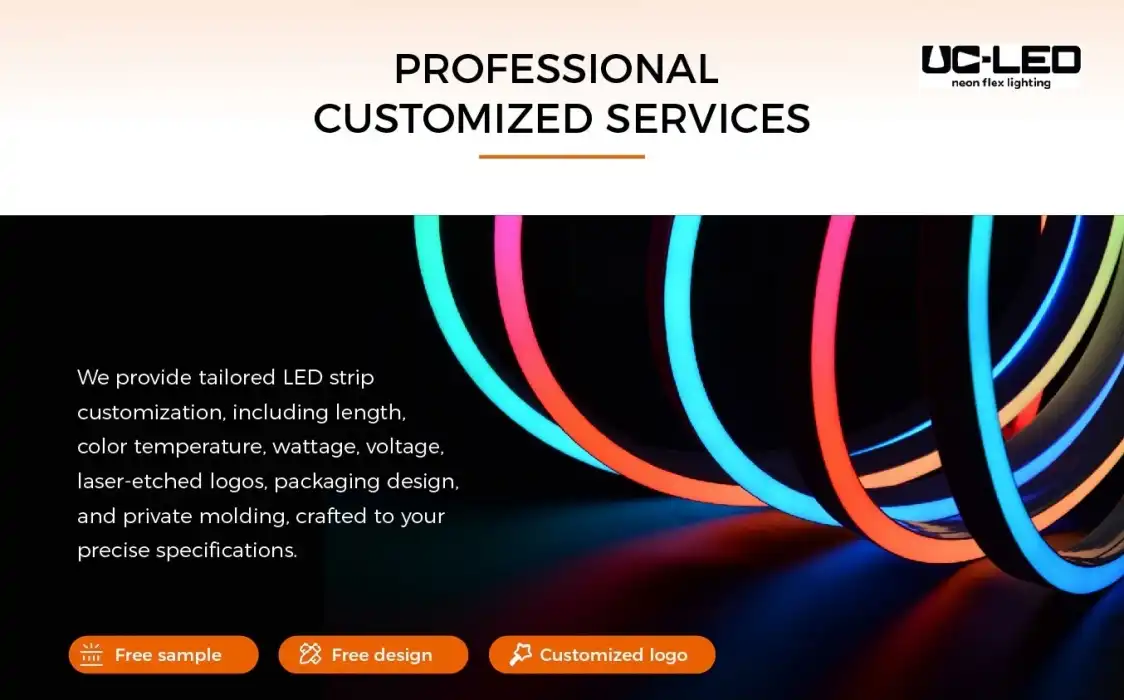
Choose QUAN HE for Your LED Lighting Needs | QUAN HE
QUAN HE Lighting Co., Ltd. is your trusted partner for premium LED lighting solutions. As a leading manufacturer with over a decade of experience, we offer high-quality LED neon flex and LED strip lights tailored to your specific needs. Our ISO-certified facility, cutting-edge R&D team, and comprehensive OEM/ODM services ensure top-notch products and exceptional support. Experience the QUAN HE difference in your next lighting project. Contact us at Linda@uc-led.com to explore our innovative lighting solutions and bring your vision to life.
source: LED Light
References
1. Johnson, R. (2022). "The Evolution of LED Lighting: From Strips to Neon Flex". Illumination Engineering Society Journal, 45(3), 78-92.
2. Smith, A. & Brown, T. (2023). "Comparative Analysis of Energy Efficiency in Modern Lighting Solutions". Energy and Buildings, 212, 110592.
3. Lee, S. et al. (2021). "Applications of Flexible LED Technologies in Architectural Design". Architecture and Lighting Design Quarterly, 18(2), 45-61.
4. Martinez, C. (2023). "LED Neon Flex: Revolutionizing Signage and Decorative Lighting". Journal of Visual Communication and Image Representation, 56, 102789.
5. Wilson, D. & Taylor, E. (2022). "The Impact of LED Lighting on Retail Environments: A Case Study Analysis". International Journal of Retail & Distribution Management, 50(4), 423-440.
